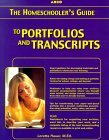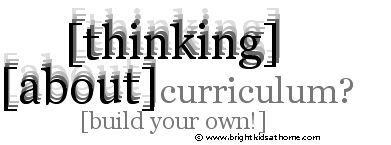
![]() How
I Develop
Our Curriculum
How
I Develop
Our Curriculum
A curriculum is really just
a master plan that is a combination of several elements. Books might be
an element, workbooks may be another (depends on the age of the student),
software might be, travel may be one of the elements of the curriculum.
Look at curriculum as your "goody" bag of mentoring tools. It
helps you help you take on the role of mentor and enables your gifted
student be the student and the teacher.
In my opinion, you can't develop a curriculum without considering the learning style of the individual student and this is why many of the "canned" curriculums fail. I develop a series of "study guides" that are the structure to how our "curriculum" works. Each study guide serves as a road map my student uses to move himself through a topic. Often, he'll explore the topic further using his own means once he has been started down a path of uncharted study through these guides. Sometimes he'll even cross out my "suggested stops" in the study guide. But by starting this sort of methodology in developing these study guides several years ago, I have managed to keep my student on a path where he pretty much works on his own and takes ownership for his own education.
There are many ways to develop a study guide I suppose. Below are the steps I use to develop my study guides. These instructions will guide you through building a study guide like what I use for one topic. Even if you plan in this way, you still may find yourself (or your student) adding more time or "subtopics" as you move through the guide you started with. Keep notes, so you remember what you did.
Always, I combine these study guides with specific travel and community service and that is typically what our curriculum consists of. The combination of these items are described in detail in a document I call a "Course Survey". I use the "Course Survey" to describe and document our school year. I have our course surveys in overview form with resourc lists [here].
My master plan starts as a series of topics that I'll get from a number of places. One source I used heavily as a guide for several years was "Home Learning Year by Year : How to Design a Homeschool Curriculum from Preschool Through High School" by Rebecca Rupp. The other resource I refer to is the "What Your X Grader Needs To Know" books by E.D. Hirsch. I also refer to curriculum posted at private schools so I have a pretty good idea what other kids my students age are learning. Between the two books and what I know my student prefers and what he lists as topics of interest I move on to develop the guides we end up using.
As we moved into high school age, I began to look at the subject requirements of the universities my student hopes to get into. One resource that has been very good are the AP course descriptions at the College Board. You can download PDF files that describe the various topics:
AP Central (is the official online home for anyone interested in or involved with the Pre-AP or AP Programs.)
Developing a theme to use in your homeschool is a good way to help keep you on track.Our homeschool is more of an eclectic one and I use these two themes when I think about a school year:
My student... has an evolved sense of humor & takes pleasure in thinking divergently
In planning, I look at certain resources as "guides" and others as simply reference. I rarely use textbooks. There are places where you can review textbook errors. Daphne the Science Guinea Pig went once on a the search for Bad Science. Anyway, Here are the resources I can recommend:
| Item | Resources |
|
|
|
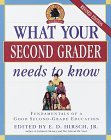 |
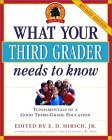 |
 |
 |
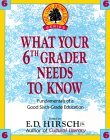 |
 |
 |
 |
 |
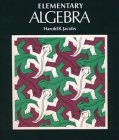 |
![]() You
Can Develop Your Own Curriculum - Ideas
You
Can Develop Your Own Curriculum - Ideas
If you use a purchased curriculum,
eventually, you will want to assemble some sort of curriculum on your
own because often the ones you buy are weak in content for the gifted
and talented student. You'll find that somehow you'll need to "tweak"
whatever "canned" package you buy for your gifted and talented
student. I have found it is just makes more sense to build your own curriculum.
Over the years, I have had questions where people want to know what their student ought to know at a certain time. I have found with my gifted student, we've never been on the "schedule" that is outlined by the professional educators. This is probably true with most gifted students. But if you are new to homeschooling, you might feel the need and the curiosity about what your student "ought" to be learning and when. There are standards of course, set at a state by state level. Do a search on "Academic Content Standards" + [Your state name] and you'll find them.
We are in Ohio, so here are the Academic Content Standards for Ohio.
An even better idea instead of state academic standards is to go to some of the better private schools in your area, you know the ones I am talking about, and get their curriculum outline. Let them think you are considering enrolling your student and the information will flow. The best time in the midwest as "contracts" for private schools are signed in February is to inquire in the December/January time frame. Inquire when contracts are due and then collect your information in the months prior to that.
![]() Resources
I know about: The
Waterford School, The
Cincinnati Country Day School.
Resources
I know about: The
Waterford School, The
Cincinnati Country Day School.
![]() If
you a re planning curriculum for High School, check out our "Upper
School" Pages.
If
you a re planning curriculum for High School, check out our "Upper
School" Pages.
List of other resources that have been recommended:
|
|
 |
 |
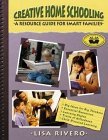 |
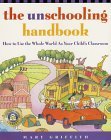 |
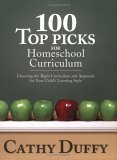 |
 |
| STEP | EXAMPLE |
Start with a list of topics you want to cover in your course. Realistically, you can cover one or two main topics and several related subtopics in a course. It helps if the main topics are related. In this example, we’ll use the idea of a “Life Science” course, with the main topics being Taxonomy and Cells. |
Life Sciences Topics: Taxonomy & Cells |
Get out your calendar and decide how often or how many hours your student may want to spend on the topic. It works best for us if there is a beginning and an end. It also helps if you mentally break up your school year into “quarters” or “semesters”. If you follow a “traditional” school year, you’ll find that it can be neatly broken up into 36 weeks, so your quarters can be 8 weeks, or semesters can be 12 weeks. In this example, our Life Science occurs for 1 hour, twice a week, for a quarter, so that means we will need to develop 16 1 hour-long "sessions". This kind of "scheduling" also helps you when you bing to think about preparing transcripts for college entrance. |
Life Sciences: Taxonomy &
Cells 1 hour twice a week |
Take your “topics list” and list all the important subtopics related to each of your two main topics. |
Life Sciences: Taxonomy &
Cells Subtopic List Classification Cells Plant and Animal Cell Structure Cell Mitosis & Meiosis The Five Kingdoms |
Take your “subtopics list” and determine how many classes you want to dedicate to each subtopic. Put them in the order you want to present them. Remember to leave time to review or further explore a topic. If you have field trips planned, allocate for that. If you have a video planned allocate for that. |
Life Sciences: Taxonomy &
Cells Classification - 1 Class Cells - 1 Class Plant and Animal Cell Structure - 1 Class Cell Mitosis & Meiosis - 1 Class The Moneran (Archaebacteria & Eubacteria) Kingdom - 2 Classes The Protist Kingdom - 2 Classes The Fungi Kingdom - 2 Classes The Plant Kingdom & Photosynthesis - 1 Class Plant Kingdom: Plant respiration - 1 Class Plant Kingdom: Leaf Pigments - 1 Class Animal Kingdom (9 Phylum) - 1 Class Animal Kingdom Invertebrates & Vertebrates - 1 Class |
Develop a list of the resources you want to use. Restrain, yourself, this list could be endless! For our Life Science course, we can list Internet (to develop our own workbook), books, purchased workbook. You will eventually need to research your book titles and workbooks. |
Life Sciences: Taxonomy &
Cells Text Resources: “What Your Fifth Grader Needs to Know” by E.D. Hirsch “Teach Yourself Genetics” Popular Science Series “A+ Projects in Biology” by Joyce VanCleave Steck-Vaughn Life Science Workbook (Grade 5) "Five Kingdoms: An Illustrated Guide to the Phyla of Life on Earth" by Lynn Margulis “Life Science: Taxonomy & Cells” our workbook generated from a number of sources. |
If you already know what books you will use, you’re probably already in good shape as for the material you want to present. Review videos. Visit websites you plan to use as part of the class. |
|
Develop a list of activities you want to incorporate into your course. This could include crafts, experiments, videos, reports and field trips. This list grows as you begin to research your topics. You’ll need to prune it back when you put it all together. |
Life Sciences: Taxonomy &
Cells Activities Activity: Illustrate the classification of 2 animals Lab Activity: Can we observe the parts of animal and plant cells with a microscope? Activity: Workbook (Steck Vaughn) Activity: Internet Quicktime Video Animations: Mitosis and Meiosis Lab Activity: Grow Micro-organisms Lab Activity: Yeast Chemistry. Lab Activity: Mushroom farm. |
Build your plan, by combining your selected resources and activities. |
Life Sciences: Taxonomy &
Cells Class 1 - Classification Reading: Life Science: Taxonomy & Cells pgs: 1-2 Activity: Illustrate the classification of 2 animals using the book: Five Kingdoms: An Illustrated Guide to the Phyla of Life on Earth. Start with the taxonomy worksheet. Class 2 - Cells Reading: What Your Fifth Grader Needs to Know pgs: 331-335 Reading: Teach Yourself Genetics pgs: 3-7 Reading: Life Science: Taxonomy & Cells Workbook pg: 3-4 Lab assignment: Can we observe the parts of animal and plant cells? Lab Activity: Microscope work: Observe and record, illustrate. Items: Cork, cheek cells, blood, plant stem, onion skin. Class 3 - Plant and Animal Cell Structure Lab assignment: Can we label plant and animal cell parts from previous lab? Activity: Label observations from previous lab using the diagrams in our work book pgs: 5-8 Reading: Life Science Workbook (Steck Vaughn) pgs 12-13 Activity: Life Science Workbook (Steck Vaughn) pgs 16-17 |
Develop your class calendar by deciding the estimated start and finish dates. Once you get to the "end" of your plan, if you are developing a transcript for college entrance, you will have a tidy way to determine "credit hours" using this method. |
|
Just prior to each class, review what you are going to present, if you're going to "present" anything and get the supplies you need for the activities. |
|
| Ad Guidelines | Contact Us | Contribute | Site Map |
©
2005-2013. Bright Kids at Home. All Rights Reserved. |
|||
|

